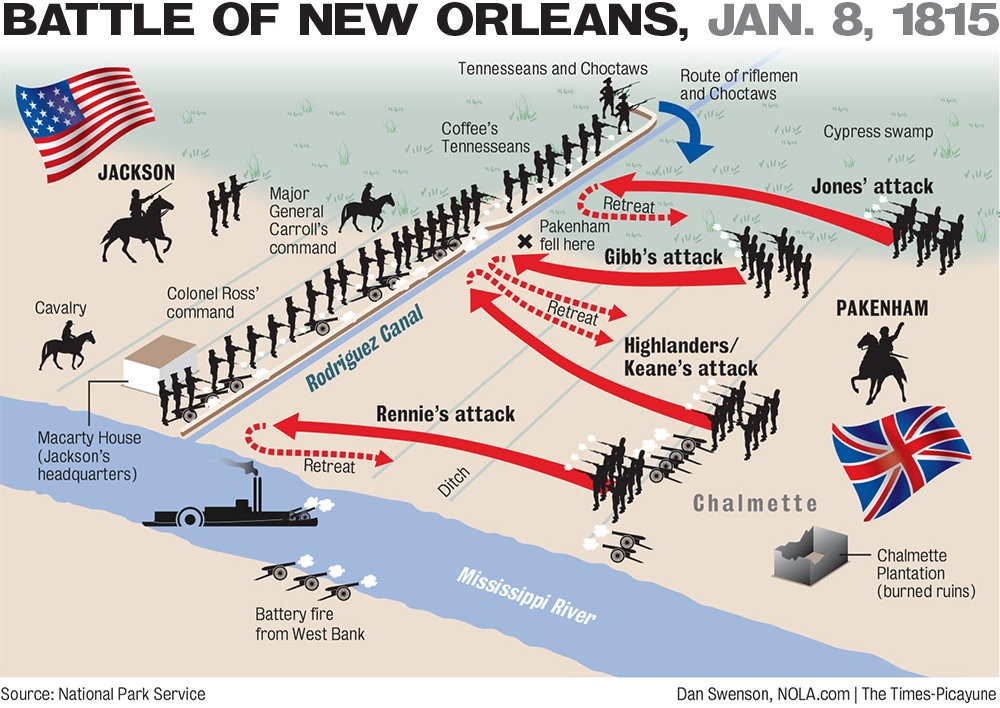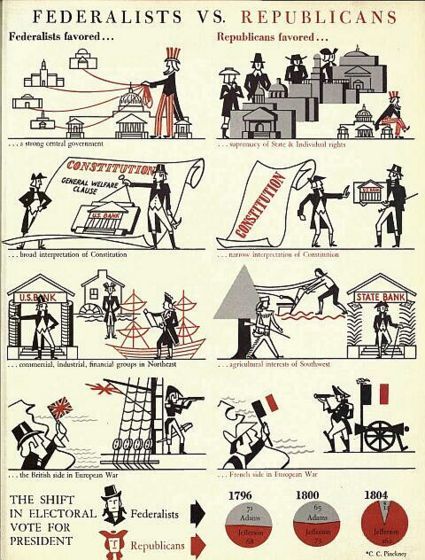textbooks:Holt Chapter 6.7.8
Teach TCI Online - Lesson 11, 12, and 13
|
Essential Questions:
| ||||||||||||||||||
History-Social Science California Content Standards:
- 8.1 Students understand the major events preceding the founding of the nation and relate their significance to the development of American constitutional democracy.
- 8.3.4 Understand how the conflicts between Thomas Jefferson and Alexander Hamilton resulted in the emergence of two political parties (e.g., view of foreign policy, Alien andSedition Acts, economic policy, National Bank, funding and assumption of the revolutionary debt).
- 8.3.5 Know the significance of domestic resistance movements and ways in which the central government responded to such movements (e.g., Shays’ Rebellion, the Whiskey Rebellion).
- 8.4.1 Describe the country’s physical landscapes, political divisions, and territorial expansion during the terms of the first five presidents.
- 8.4.2 Explain the policy significance of famous speeches (e.g., Washington’s Farewell Address, Jefferson’s 1801 Inaugural Address, John Q. Adams’s Fourth of July 1821 Address).
- 8.4.4 Discuss daily life, including traditions in art, music, and literature, of early national America (e.g., through writings by Washington Irving, James Fenimore Cooper).
- 8.5.1 Understand the political and economic causes and consequences of the War of 1812 and know the major battles, leaders, and events that led to a final peace.
- 8.5.2 Know the changing boundaries of the United States and describe the relationships thecountry had with its neighbors (current Mexico and Canada) and Europe, includingthe influence of the Monroe Doctrine, and how those relationships influenced westward expansion and the Mexican-American War.
- 8.6.2 Outline the physical obstacles to and the economic and political factors involved in building a network of roads, canals, and railroads (e.g., Henry Clay’s American System).
- 8.8.2 Describe the purpose, challenges, and economic incentives associated with westward expansion, including the concept of Manifest Destiny (e.g., the Lewis and Clark expedition, accounts of the removal of Indians, the Cherokees’ “Trail of Tears,” settlementof the Great Plains) and the territorial acquisitions that spanned numerous decades.



